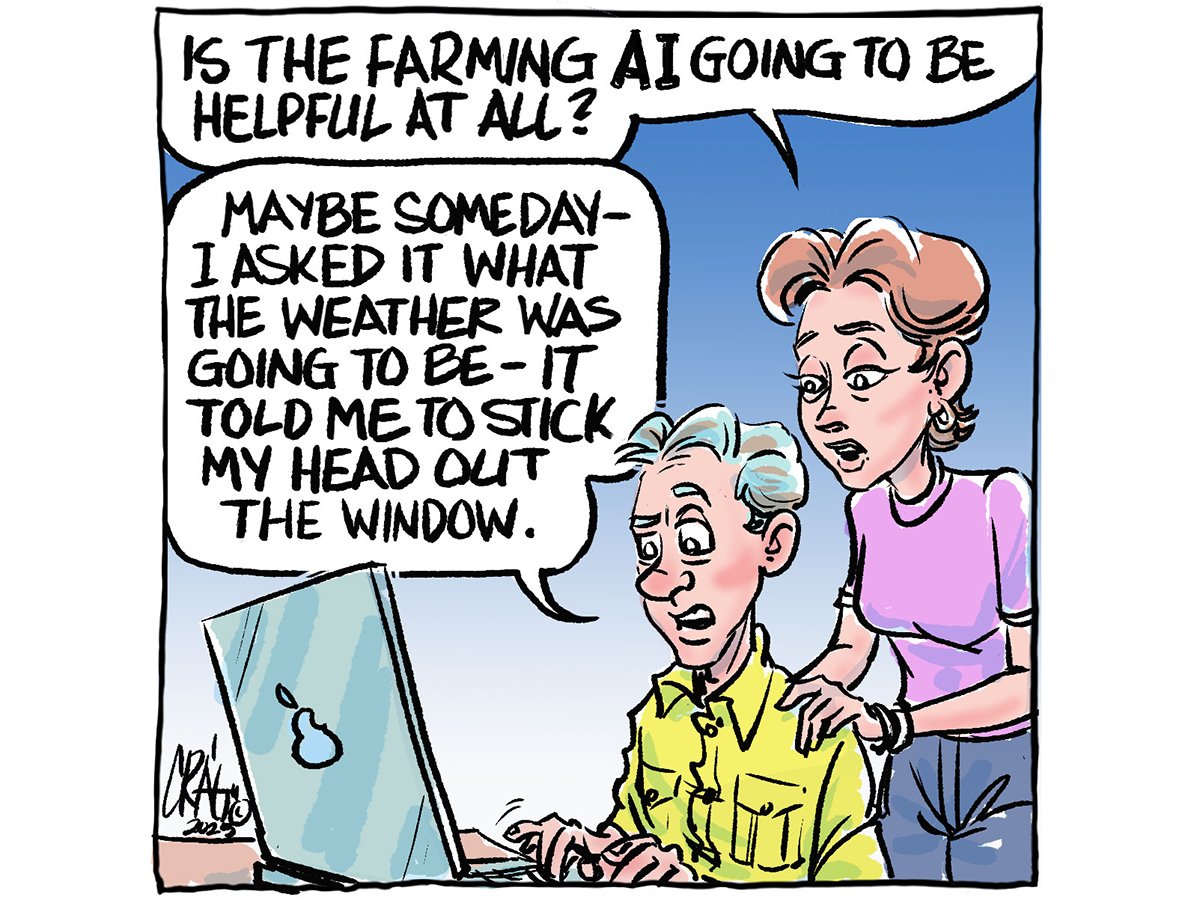The potential of artificial intelligence has certainly captured the public imagination in recent years, ever since the arrival of ChatGPT and later a plethora of similar programs.
These tools have generated a lot of sensational news headlines, focusing on students who use AI to write school essays and those who put real life people into made-up, and often unflattering, situations.
But there’s much more to these new tools than that, including their potential to go out into the online universe and come back in seconds with answers to questions.
Read Also

Budget seen as fairly solid, but worrying cracks appear
The reaction from the agriculture industry to prime minister Mark Carney’s first budget handed down November 4th has been largely positive.
The possibilities are endless and seen as a way to make it much quicker to do online research.
Farm Credit Canada and Results Driven Agriculture Research have launched an initiative that recognizes this power.
The generative AI tool is called Root, and promises to deliver “timely advice (that) producers can use immediately.”
FCC says it will allow farmers to:
- Quickly build a personalized business plan.
- Track weather predictions for the crop season.
- Analyze images to identify crop threats or equipment parts.
- Troubleshoot equipment issues.
- Find grants and programs relevant to a producer’s operation.
- Stay up to date on interest rates and commodity prices.
Sample questions of what could be asked of Root include:
- What are the weather predictions for the 2025 crop season in southern Saskatchewan?
- Can you identify the plant in the photo I provided and any possible issues it may have?
The program will have access to decades of research, field experience and proven practices, and the partnership with RDAR is expected to increase its connection to relevant data sources.
This is important because most of the AI chatbots in use today gather their information from across the internet and social media, and sometimes the information it collects can be flat out wrong.
It’s nice to see that Root’s designers appear to be conscious of these dangers, but even then, it still has its limitations.
“How do I control multiple-resistant kochia in my fields?” we recently asked it.
Root said we could burn it. That would make for one heck of a fire.
It suggested hand-pulling. That would take awhile.
It suggested planting competitive crops to choke it out. It recommended herbicides, provided they are effective, which was the whole challenge we wanted to address.
Finally, it referred us to a federal fact sheet about Palmer amaranth, also an invasive weed, but unrelated.
Root was more useful when asked about the proper fungicide timing for fusarium head blight. We asked if it would rain in Carman, Man., within the next 48 hours and was told to check our local forecast.
Needless to say, looking for answers to agronomic questions using this type of AI tool must be done with a great deal of caution, even when using something as secure as Root.
It must also be said that as powerful as this new technology might be, it can’t be seen as a replacement for good old-fashioned, face-to-face agricultural extension work.
Tools such as Root will certainly have their place, but we hope that robot extension workers are not in agriculture’s future.















